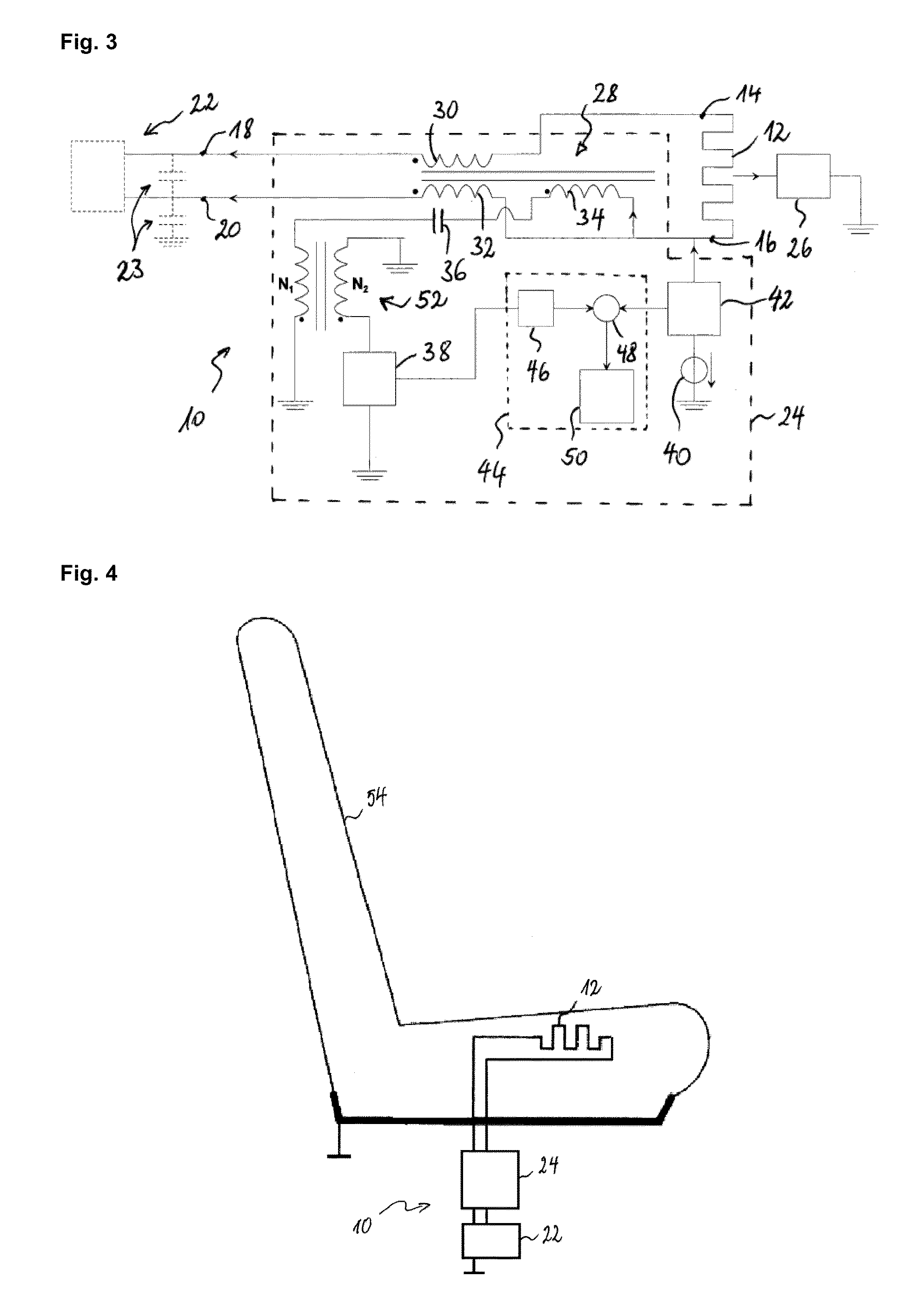Capacitive sensing system able of using heating element as antenna electrode
a capacitive measurement and antenna electrode technology, applied in the direction of instruments, pedestrian/occupant safety arrangements, vehicular safety arrangements, etc., can solve the problems of large cores of inductor wound on the inductor, the device may not operate in sensing mode and in heating mode, and the capacitive measurement circuit and the seat heater are high ac impedance at the same time. , to achieve the effect of high impedance and easy connection
- Summary
- Abstract
- Description
- Claims
- Application Information
AI Technical Summary
Benefits of technology
Problems solved by technology
Method used
Image
Examples
Embodiment Construction
[0031]FIG. 1 shows a combined heating and capacitive sensing system 10 according to a first example of the invention. The combined system 10 comprises a heating element 12 that produces heat when electrical current is caused to flow across it. The heating element 12 may comprise a conductive wire, cable, fibre, bundle of fibres or a conductive track (e.g. made of a PTC material) printed on a flexible support. The heating element 12 has a first 14 and a second 16 terminal connected to a first 18 and a second 20 terminal of a heating current supply 22, respectively. The heating current supply 22 (e.g. a direct current source and control electronics) and the heating element 12 form together the heating circuit of a heater, e.g. for a vehicle seat. The terminals of the heating current supply 22 typically have low AC impedance to AC-ground (e.g. due to coupling capacitors 23) in order to avoid that AC signals disturb the heating current supply 22. The heating current supply preferably co...
PUM
 Login to View More
Login to View More Abstract
Description
Claims
Application Information
 Login to View More
Login to View More - R&D
- Intellectual Property
- Life Sciences
- Materials
- Tech Scout
- Unparalleled Data Quality
- Higher Quality Content
- 60% Fewer Hallucinations
Browse by: Latest US Patents, China's latest patents, Technical Efficacy Thesaurus, Application Domain, Technology Topic, Popular Technical Reports.
© 2025 PatSnap. All rights reserved.Legal|Privacy policy|Modern Slavery Act Transparency Statement|Sitemap|About US| Contact US: help@patsnap.com



